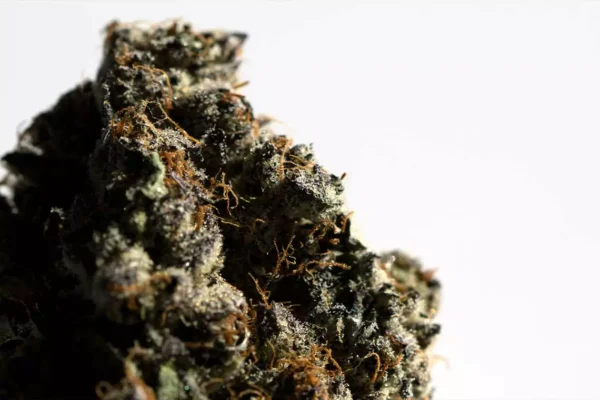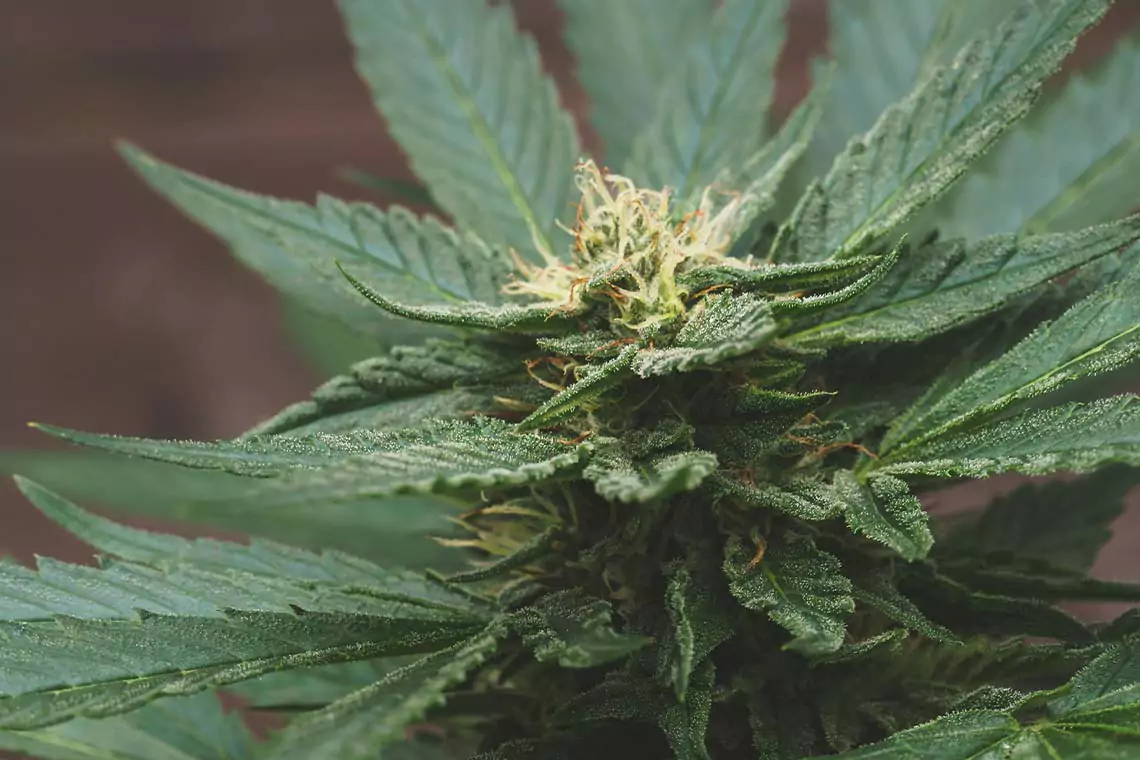Cultural, Informational
Difference Between Marijuana and Hemp Plants
Hemp and marijuana plants are both varieties of the Cannabis sativa species. Marijuana usually refers to cannabis strains used for medicinal or recreational purposes due to their psychoactive effects.
In contrast, hemp is cultivated for its fibers and oils used in various products, including clothing, food, beverages, cannabidiol (CBD) oil, personal care items, and nutritional supplements. Understanding the difference between marijuana and hemp is crucial, especially as hemp and more legal forms of marijuana products gain popularity in many regions.
Key Takeaways
- Cannabinoid Content – Marijuana typically has higher THC levels, which cause psychoactive effects, while hemp has low THC and higher CBD content, causing no psychoactive effects.
- Legal Status – Marijuana is regulated and often illegal in many places due to its high THC content, whereas hemp is federally legal in the U.S. under the 2018 Farm Bill, provided it contains less than 0.3% THC.
- Uses and Applications – Marijuana is primarily used for recreational and medicinal purposes due to its psychoactive properties, whereas hemp is used in a variety of industries, including textiles, food, and supplements, due to its versatility.
- Psychoactive Effects – Marijuana can induce psychoactive effects, making users feel “high,” whereas hemp products, including CBD, do not have psychoactive effects and are used for therapeutic purposes without altering their mental state.
Table of Contents:
A Brief History Of Cannabis
The cannabis plant has played a significant role in human history, serving as both a medicinal remedy and a source of fiber for textiles. However, in 1937, the Marijuana Tax Act was introduced by Congress, imposing heavy taxes on cannabis sales and effectively banning personal possession, albeit with relatively mild penalties.
This is where the negative stigma on marijuana began. The landscape changed dramatically in 1970 when the Controlled Substances Act was passed, classifying marijuana as a Schedule 1 drug alongside heroin and LSD, thus completely prohibiting its use.
Today, marijuana is still a complicated and changing topic in America. Marijuana is illegal at the federal level, but many states have laws legalizing medical and recreational use. The industry keeps growing due to better cultivation technology and more people recognizing its medical and economic benefits.
Though hemp has been cultivated since the colonial age, it, too, has also faced challenges in the country’s landscape. In recent years, shifting public opinion has led to legislative changes, ultimately removing hemp from the Schedule 1 list. This change has sparked a resurgence in many states’ hemp industry, revitalizing long-dormant agricultural sectors and opening new opportunities for hemp-derived products.
What is Marijuana?
When people refer to “marijuana,” they typically mean the classic and well-known product seen in movies and culturally renowned for its high-inducing psychoactive effects. The term “weed” is also commonly used, along with various other slang terms such as pot, dope, grass, reefer, herb, and Mary Jane.
Cannabis marijuana plants are often labeled as Cannabis sativa, Cannabis indica, or hybrids. Each type is thought to have unique traits and effects. A typical “high” associated with using marijuana results in effects such as lifted mood, relaxation, feelings of euphoria, and altered perception of time.
Marijuana has distinct flavors and aromas when used as well, depending on the method of consumption. Some strains are sweet and fruity, while others are earthy, savory, or grassy.
What is Hemp?
Hemp is a variety of the Cannabis sativa plant species explicitly grown for industrial uses. It is one of the fastest-growing plants and was one of the first plants to be spun into usable fiber over 10,000 years ago. Unlike its close relative, marijuana, hemp contains very low levels of THC.
Hemp is used in textiles, building materials, CBD oil, biofuel, and can even be eaten. It is praised for its sustainability and minimal environmental impact, making it a popular choice in various industries looking for eco-friendly alternatives.
Hemp vs Marijuana: Cultivation Methods
Marijuana Cultivation
- Purpose – Grown primarily for its psychoactive properties, marijuana is cultivated for both medicinal and recreational use.
- Plant Characteristics – Marijuana plants are typically bushier with broader leaves and are cultivated to maximize THC content.
- Growing Environment – These plants often require controlled indoor environments with precise lighting, temperature, and humidity to optimize growth and potency.
- Plant Gender – Marijuana cultivation focuses on female plants, as they produce the THC-rich buds desired by consumers.
- Harvesting – Harvesting marijuana involves careful handling to preserve the trichomes, which contain the majority of cannabinoids and terpenes.
- Regulation – Marijuana cultivation is heavily regulated, varying by state and country, with strict guidelines on quality control and potency.
Hemp Cultivation
- Purpose – Grown for industrial and therapeutic uses, hemp produces a wide range of products, including textiles, food, and CBD oil.
- Plant Characteristics – Hemp plants are taller and have thinner leaves than marijuana, with a focus on maximizing fiber and seed production.
- Growing Environment – Hemp is typically grown outdoors and can thrive in various climates with less stringent environmental controls.
- Plant Gender – Hemp cultivation includes both male and female plants, focusing on the entire plant rather than just the buds.
- Harvesting – Hemp is harvested with machinery suited for large-scale agricultural production, focusing on fiber, seeds, and CBD extraction.
- Regulation – Hemp cultivation is less regulated than marijuana, with federal legalization under the 2018 Farm Bill, but it must contain less than 0.3% THC.
Hemp vs Marijuana: Visual Appearance
Structure
Hemp plants are generally taller, often reaching 10 to 15 feet. They have a slender and fibrous stalk, which is ideal for industrial applications like textiles and building materials. Marijuana plants are usually shorter and bushier, with an average height of 3 to 6 feet. They have a more robust and thicker structure designed to support dense, resinous buds.
Leaves
Hemp leaves are typically thinner and more spread out, with fewer leaflets per leaf compared to marijuana. The leaves tend to grow predominantly at the top of the plant, while marijuana leaves are broader and have more leaflets (up to nine), creating a fuller and more complex leaf pattern. The leaves are more concentrated along the branches and stems.
Density
Hemp plants are less bushy and sparsely populated with foliage, allowing for better airflow and easier large-scale cultivation. Marijuana plants are bushier with a denser foliage and bud structure. The plant is designed to produce large, dense flowers rich in cannabinoids and terpenes.
Color
Depending on the strain and growing conditions, Hemp can vary in color from light green to dark green. However, it generally maintains a uniform color throughout its structure. Marijuana plants can exhibit a wide range of colors, from shades of green to purple, blue, and even red hues, especially during the flowering stage when anthocyanins (plant pigments) are more pronounced.
Flower/Bud Appearance
Hemp flowers are generally smaller and less dense. They produce fewer trichomes (the resin glands containing cannabinoids and terpenes) than marijuana flowers. Marijuana buds are larger, denser, and coated with a thick layer of trichomes, giving them a frosty appearance. The buds are typically sticky due to the high resin content.
Hemp vs Marijuana: Strains
Sativa Strains
Cannabis is a species of flowering plants that includes two main subspecies: sativa and indica. Cannabis sativa varieties are native to tropical regions and typically grow tall. Many popular marijuana strains among the Baby Boomer generation, such as Maui Wowie, Thai Stick, and Panama Red, are sativa strains. This was the generation that began honing different strains for their potential benefits.
While the conversation about different strains is mostly had by those using marijuana for its psychoactive properties, there are also different strains of hemp used for CBD oils, tinctures, and other CBD products.
Indica Strains
In contrast, Cannabis indica strains originate from the Hindu Kush, a mountain range separating the Indian subcontinent from the rest of Asia. Indica strains are generally shorter and bushier than sativa strains. These gained popularity in America after California legalized medical marijuana in 1996 under the Compassionate Use Act. Strains with “Kush” are usually indica or indica-dominant hybrids.
Hybrid Strains
Over time, breeders have cross-bred these different cannabis varieties to create hybrids. This same method was used to develop hemp strains that resemble marijuana but have a THC level low enough to be legal. The rapid growth of the marijuana industry has led to significant technological advancements and the creation of many new and complex strains. As legalization expands and demand rises, growers and researchers invest much in technology to improve growth conditions, plant health, and cannabinoid profiles.

Photo by Joanna on Unsplash
Hemp vs Marijuana: Uses
Marijuana Uses
Marijuana’s versatile applications make it a valuable plant for both potential medical and recreational purposes, offering a range of benefits depending on the user’s needs and preferences:
- Pain Relief
- Anxiety and Depression
- Nausea and Vomiting Relief
- Appetite Stimulation
- Muscle Spasm Relief
- Seizure Relief
- Sleep Disorder Relief
- Social Interaction Lubricant
- Stimulate Creativity and Focus
Note: Ongoing research is still exploring the potential medical benefits of marijuana. There is no definitive proof of its medicinal properties, so it is important to consult with your doctor regarding any health concerns you may have.
Hemp Uses
Hemp is non-psychoactive and can be used to make various products, such as:
- Paper (grows faster than trees and other crops, making it a more sustainable option)
- Oils for Personal Care
- Clothing
- Textiles
- Animal Feed
- Plastics
- Nutritional Supplements (very nutritious, containing complete protein and high fiber)
- Food Products (hemp seeds, hemp milk, hemp protein powder, and hemp oil)
Hemp vs Marijuana: Legality
“Cannabis” is the overarching term that encompasses both marijuana and hemp, but its legal status depends on the specific THC content and intended use of the plant. This distinction creates a complex legal landscape where understanding the particular classification of the cannabis plant is essential for compliance and informed use.
Marijuana Legality
Legally, “marijuana” means cannabis with more than 0.3 percent THC by dry weight. The THC content can be different among various cannabis plants, with some strains bred by state-of-the-art farms to have higher THC levels. Marijuana, which is high in THC, the psychoactive component, is heavily regulated and often illegal at the federal level in many countries, including the United States.
However, marijuana is legal for medical and recreational use in several U.S. states and countries worldwide, each with its own regulations. In some states, it remains entirely illegal. The legal landscape is constantly and rapidly evolving as marijuana research progresses.
Marijuana Reclassification
On May 16th, 2024, the United States Drug Enforcement Administration (DEA) proposed reclassifying marijuana from a Schedule I substance to a Schedule III substance. This change would relax federal enforcement of marijuana laws and recognize it as acceptable for medical use. This step aims to reduce the stigma associated with marijuana use, as it will no longer be grouped with harsher drugs like heroin.
- Schedule I – Schedule I substances are classified as having a high potential for abuse with no currently accepted medical use. Examples include heroin, LSD, ecstasy (MDMA), methaqualone, and peyote. These drugs are deemed highly dangerous and are not approved for medical treatment in the United States.
- Schedule II – Schedule II substances also have a high potential for abuse, which can lead to severe psychological or physical dependence. These drugs are considered dangerous but have accepted medical uses under strict regulation. Examples include Vicodin (hydrocodone), cocaine, methamphetamine, methadone, Dilaudid (hydromorphone), Demerol (meperidine), OxyContin (oxycodone), fentanyl, Dexedrine, Adderall, and Ritalin.
- Schedule III – Schedule III substances have a moderate to low potential for physical and psychological dependence. Their abuse potential is lower than Schedule I and II drugs but higher than Schedule IV. Examples include Tylenol with codeine (containing less than 90 milligrams of codeine per dosage unit), ketamine, anabolic steroids, marijuana, and testosterone. These drugs are accepted for medical use but are controlled to prevent abuse and dependence.
Hemp Legality
Hemp, defined as cannabis containing less than 0.3% THC, is federally legal in the U.S. under the 2018 Farm Bill and has broader legal acceptance globally due to its non-psychoactive nature and industrial applications. This definition was first suggested in 1979 by Ernest Small in his book “The Species Problem in Cannabis: Science & Semantics.” Small noted the difficulty in distinguishing hemp from cannabis since there is no taxonomic difference between the two and proposed the 0.3 percent rule as a possible solution. However, he admitted it was an arbitrary number.
This threshold was later adopted in the legal definition of hemp in the Agricultural Act of 2018 and other U.S. laws, as hemp is unlikely to produce a high.
Final Thoughts
While marijuana and hemp both belong to the cannabis family, they differ significantly in THC content, legal status, uses, cultivation methods, and overall impact. Marijuana, with its higher THC levels, is widely used for its psychoactive and medicinal properties, often facing strict regulatory scrutiny. Hemp, on the other hand, boasts a low THC content and is celebrated for its versatility in industrial and therapeutic applications, enjoying broader legal acceptance. Whether for recreation, wellness, or industrial use, both marijuana and hemp play significant roles in our modern society and are here to stay.
(Disclaimer reminder: This article is not medical advice. It is based on anecdotal user experience alone. If you are thinking about incorporating cannabis (delta-8 THC, delta-9 THC, CBD, etc) into your medicinal routine, please consult a healthcare professional. Do not stop taking any prescribed medications without first consulting your doctor.)
Disclaimer: This article reflects the laws of the United States at the time it was written. Because cannabis laws in the United States laws are subject to change at any time, please make sure that you are always staying up to date on your federal, state, and local county’s cannabis laws. Additionally, we are NOT encouraging anyone to break the law––we are simply showing people ways to legally and discreetly bring their cannabis products along with them on their travels so that they may have access to those products when they reach their intended destination.



